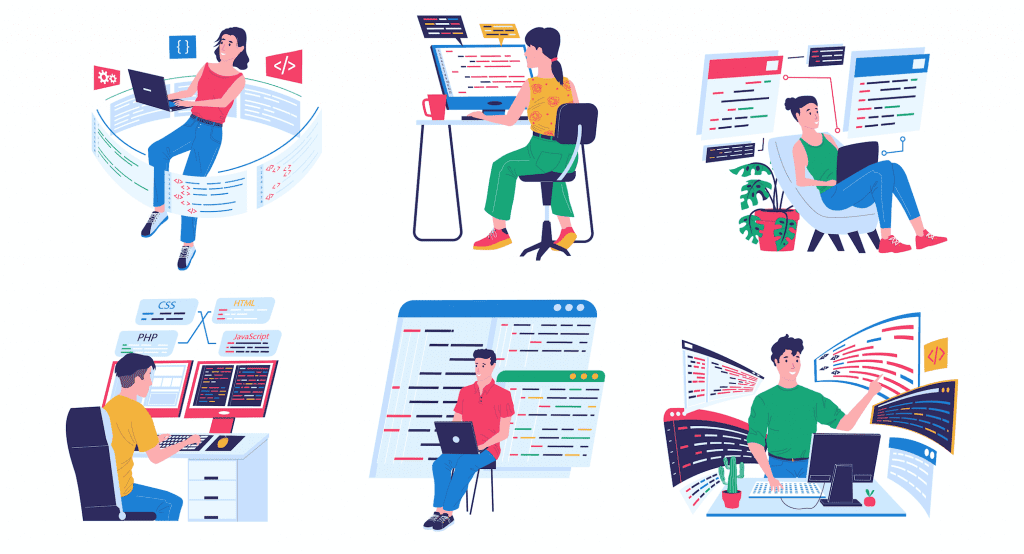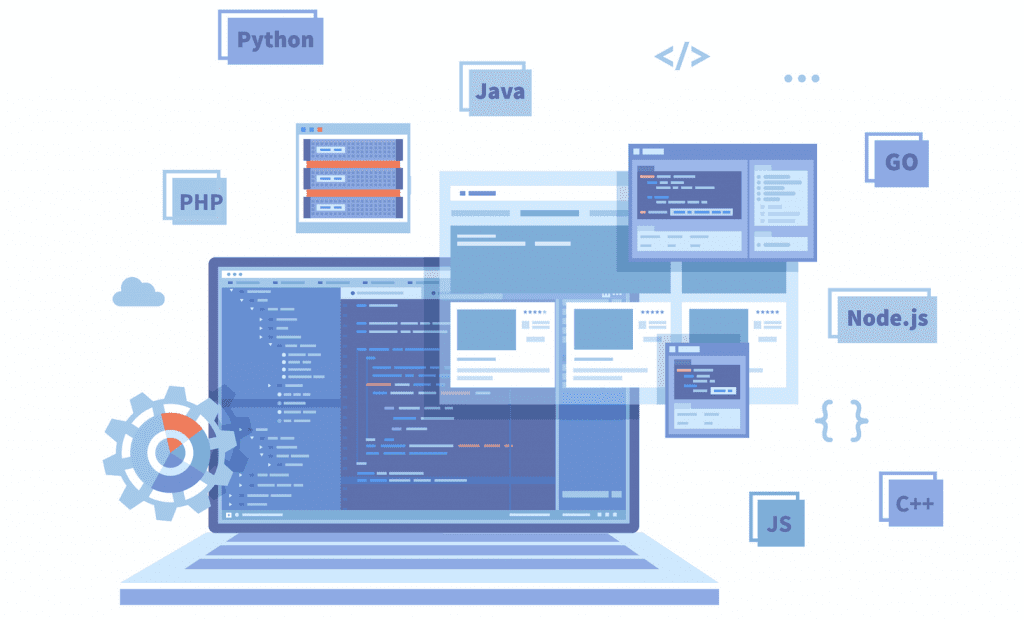It’s accepted wisdom these days that every business requires a website. Too many searches for local businesses and too much regular shopping happens online. There is simply too much potential business you miss without one.
While the tech-savvy might build their own sites, odds are good that you’ll go looking for a business that does website development. Pretty quickly, you’ll discover that developers come in two main types: front end and back end developers.
While front-end developers handle the visual stuff you see on screen, you might wonder: “What is a back end developer?”
Keep reading to learn about what a back end developer is and does.
Back End Development: Server-Side VS Client-Side
Before jumping into back end developers and their role, you need a little information about how websites operate. At its core, a website is nothing more than a set of files that exist on a server. When you go out onto the Internet, the web browser lets you access the files on the server and display the content on your computer.
Of course, there is a lot happening behind the scenes. Some of those actions, like displaying graphics or loading a user interface, happen client-side. That means it happens on your computer, tablet, or phone
Some of the actions take place on the servers where the files are stored. Searching through a database, such as a product search on a retailer website, typically happens on the server. These types of activities are server-side.
What Is a Back End Developer?
It’s a little crude, but you can think of front end vs back end divide this way. Front end developers work with client-side activities and back-end developers work with server-side activities.
You might imagine it more easily with a house-building analogy. If a front end developer paints the walls and installs the floors on your website, then the back end developer builds the walls and installs the wiring and plumbing.
The back end developer concerns themselves with things like the overall structure of the site and the interconnection between parts of the site, such as the database and the user interface.

What Does a Back End Developer Do?
A back end developer plays a crucial role in building functional websites. In essence, they write the code that ensures that information can get from servers and databases to your computer. They typically do this by writing custom applications that serve a business owner’s specific needs.
Let’s say that you run a business selling raw materials to manufacturers. That means you need an inventory database that updates in real-time. The back-end developer will often create this database.
You also need a program that lets the customer search that database from the site, input weights or volumes, and provide a real-time cost estimate. The back-end developer writes the program that lets all of those functions happen and delivers the results back to the website.
Since some of these activities happen on the server and some of them happen on the website, the back end developer may also create an API. An API essentially lets different kinds of programs talk to each other and trade information.
Back end developers often get tasked with optimizing the code so the website responds faster or uses fewer resources on the server itself.
Back End Requirements
Back end developers work with different technologies and programming languages than front-end developers most of the time. For example, back end developers need a good working knowledge of how servers operate in areas like hosting. Front end developers can usually get away with a limited amount of knowledge about servers.

Languages and Frameworks
Website development companies will often favor certain programming languages. A typical back end developer, however, will usually know at least a few of the major back end programming languages, such as:
- PHP
- Python
- Ruby
- Java
- SQL
They will also know at least one or two, but usually several, back end frameworks, such as:
- Laravel
- Django
- Ruby on Rails
- CakePHP
- Flask
The combination of core languages and frameworks that speed up coding gives back end developers the essential coding tools they need.
Other Requirements
Back end developers can’t get away with mere coding skills. They need a solid command over at least one version control system, such as Git or the preferred in-house system at their company.
Let’s say some new bit of code makes the entire website fail. These systems let the programmers or company roll things to a functional version of the site.
You also need solid communication skills as a back end developer. While they likely won’t spend as much face time with clients as a sales rep or front end developer, they must communicate well enough to understand the client’s needs.
Equally importantly, they must communicate with the front end developers about the website. To that end, most back end developers learn at least a basic level of proficiency with front end programming languages. It helps them understand where their programming intersects with the visible website.
Good back end developers also become proficient with testing approaches. These make it easier to catch and fix problems before you deliver the website.
Back End Developers and You
The question of what is a back end developer might come naturally, but it’s not necessarily the most important question. Back end developers work on the parts of your website that you’ll never see. When done right, their work remains largely invisible.
They handle issues like database management and communication between the front and back end of the site. While important in terms of site function, you’ll likely spend the bulk of your time talking with front-end developers.
